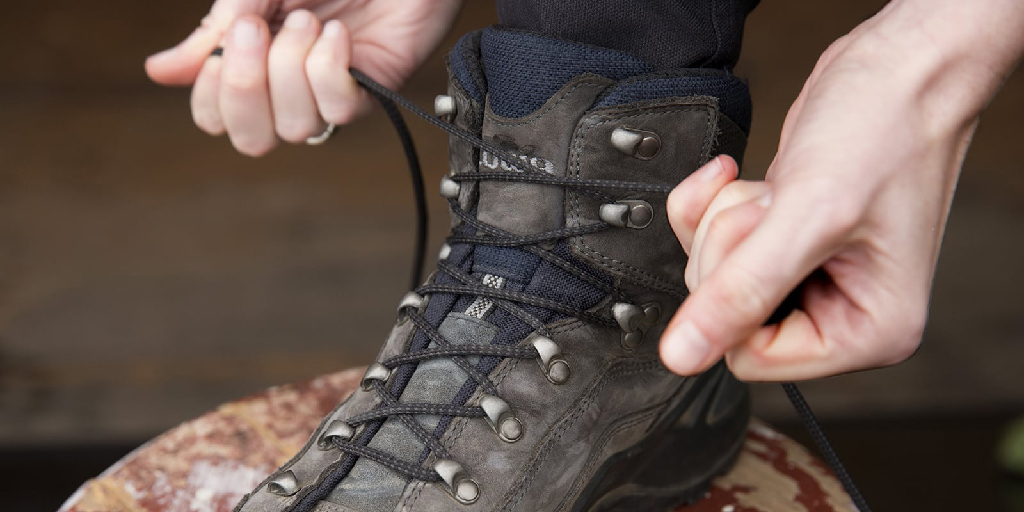Latest News
Share this post:
One appeal of outdoor adventure is that you get to unplug and enjoy quiet time away from the city. Because that also means you’re farther from emergency responders and urgent care clinics, it’s important to be well-versed in wilderness first aid. Think of it as your opportunity to become more capable and self-sufficient.
The vast majority of incidents outdoors are minor and easily treatable. When providing aid in the wilderness, most of the time your goal is to keep a condition from worsening so you can continue with your adventure. That said, it’s important to be prepared for any situation.
The first thing you learn in a wilderness first-aid course is how to evaluate a patient, which includes the following steps:
-
-
-
-
- Size up the scene
- Identify life threats
- Do a focused exam: head-to-toe check, vital signs and patient history
- Make a problem list and care plan, which includes an evacuation decision
- Treat the patient, providing both medical and emotional support
- Monitor how the patient is doing
-
-
-
Wilderness First Aid Vs. “City” First Aid
If you’ve already had some general first-aid training, it’s worth noting how wilderness first aid may differ. There are four primary factors:
-
-
-
-
- Time: It’s a long way to the doctor’s office and wilderness search and rescue personnel simply can’t respond as quickly as when we dial 9-1-1 in the city. In the backcountry it could be hours or days until your patient gets professional care, so you need to be ready to render emergency aid and to care for that person for an extended period of time.
- Environment: You may face extremes of weather and different types of physical hazards than you would encounter in the city.
- Resources: When you’re administering aid in the backcountry, you’re limited to what’s in your pack and what you can use from your surrounding environment. A good wilderness medicine class should cover what to carry in your first-aid kit.
- Communication: Even with expanding cellphone coverage, your ability to call for help from the backcountry is limited; that means your providing care might be the patient’s only option.
-
-
-
Preparing to Give Wilderness First Aid
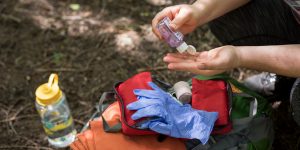
Say you’re out hiking and come upon someone who is bleeding and unconscious. Your first instinct might be run to them to offer aid. However, you need to ensure you don’t become a casualty yourself, and that you understand the situation before rushing to begin treatment. That’s why you need to follow these steps before doing anything else:
-
-
-
-
-
- Determine whether the area is safe: Ensure no further harm is imminent—for both patient and responders. If a rockslide caused the injury, for example, you might need to move the patient out of the path of additional rockfall.
- Identify the Mechanism of Injury (MOI). Look around to determine what might have caused the accident or injury. That provides clues to the type of injuries that might be present.
- Form a general impression of the seriousness of the situation. If the patient is injured, how injured? If the person is sick, how sick?
- Determine the number of patients. Don’t assume that the most obviously injured person is the only one in need of assessment and care.
- Protect yourself: Prudent caregiver practice is to assume all people are infectious. Put on gloves and a mask, and wash hands thoroughly before and after patient contact.
-
-
-
-
Wilderness First Aid: Initial Patient Assessment
Once you’ve determined that it’s safe for you to begin treating your patient, your next actions should be to identify any immediate threats to the patient’s life. Before you begin a preliminary life-threat exam, begin with two quick steps:
-
-
-
-
- Obtain consent to treat (if the person is conscious). Ask the person if you can help. If the answer is “yes,” then ask their name, symptoms and what happened.
- Establish responsiveness. Attempt to wake the patient if they aren’t responding. (If there is any possibility of a spine injury, you also need to carefully place your hands on either side of the person’s head and keep the patient still.)
-
-
-
1. Airway check: Look in the mouth and check the airway for obstructions.
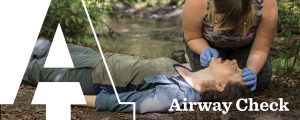
2. Breathing check: Look closely at the chest; listen and feel for signs of respiration.
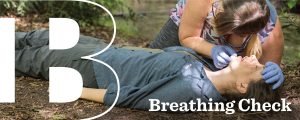
3. Circulation check: Check for a pulse and for major wounds that are bleeding.
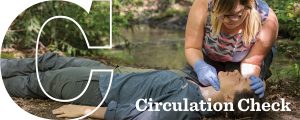
4. Disability decision: If you can’t rule out a spine injury, continue to protect it.

5. Expose injuries: Without moving the patient, open up clothing covering serious injuries so you can fully evaluate and treat them.
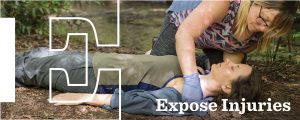
Whether you check for major bleeding (C) first or for breathing issues (A and B) first depends on your initial judgment at the scene. If you suspect a major wound, check and stabilise it first.
Deal with any immediate life-threatening conditions found during the ABCDE exam. Those might include removing airway obstructions, doing CPR or applying direct pressure to major bleeding. Once the patient is out of initial danger, you can begin a more thorough examination.
Wilderness First Aid: Secondary Patient Assessment
After you’ve done your initial patient assessment, you’ll gather information to make your treatment plan, inform your evacuation decision and to pass on to medical professionals who later care for the patient. You might also choose to relocate the patient to a more stable, more sheltered site at this time.
The procedures below highlight key stages of the secondary exam. A wilderness first-aid course will take you through the process involved in each procedure:
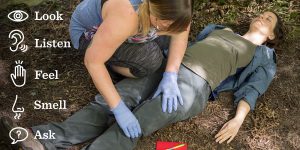
Do a Head-to-toe Exam: Start by ensuring your hands are clean, warm and gloved. Then explain to the patient what you’re doing: methodically going over all areas of the body looking for clues about potential injuries or illness. Your analysis includes several methods of detection:
-
-
-
-
- Look: for blood and other bodily fluids, discolouration or unusual shapes
- Listen: for airway noises or unusual sounds when joints are moved
- Feel: for wounds, deformities and unexpected hardness, softness or tenderness
- Smell: for unusual odours
- Ask: if anything hurts or feels odd or numb
-
-
-
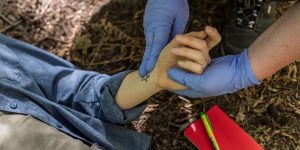
Check Vital Signs: Check the time and write all of the vital signs down. One helpful tip is to write them on a piece of tape and place it on the patient’s leg so the information travels with them when additional help arrives. Here’s what you’ll take notes on:
-
-
-
-
- Level of responsiveness: Is the patient awake and oriented? Awake and disoriented? Or is your patient unconscious or unresponsive?
- Heart rate: Using the wrist pulse, check the number of beats per minute and note whether the pulse is strong or weak; regular or irregular.
- Respiration rate: Check the patient’s number of breaths per minute and note whether the breathing is easy or laboured.
- Skin signs: Look at skin colour, temperature and moisture. The inside rim of the lower eye or inside the lower lip are good places to check for colour. Is it pink or pale? Is the rest of their skin warm and dry vs. cool and clammy? If possible, also record the patient’s temperature with a thermometer.
-
-
-
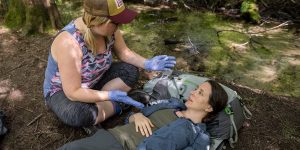
Do a Patient History: Ask questions to learn valuable information to help you with your assessment and treatment. For example, you might find that your patient missed taking important medications or didn’t drink enough water on a hot day. To cover the important topics, ask them about the following:
-
-
-
-
- Chief complaint: Ask the following questions: What is your most significant concern? When did it start? What makes it worse or better? Where is it located? How severe is it?
- How old are they?
- Symptoms: Ask if the patient can provide additional details about the chief complaint, or if they have other conditions or concerns.
- Allergies: Are there severe ones? (Food and medicine are common ones; also ask about bees.) What are the patient’s reactions to their allergies?
- Medications: Get as many details as possible for both prescription and over-the-counter drugs.
- Pertinent medical history: Find out if they have any medical conditions that require them to see a doctor for treatment.
- Last fluid/food intake, last urine/bowel output: How long ago and how much?
- Events: Ask if they know what caused the event and for details leading up to it.
-
-
-
Wilderness First Aid: Making a Treatment Plan
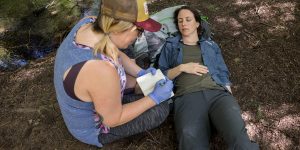
Go over all of the information you’ve gathered and make a treatment plan, including anticipated problems. Then follow your plan while monitoring the patient’s health closely and ensuring that they are as comfortable as possible.
Treating Medical Issues: Depending on the type of medical issue and severity of the problem, you may be able to treat your patient and you can both continue on with your wilderness adventures. Taking a Wilderness First Aid class will help you learn about a variety of medical issues, and what you should do for them, including:
-
-
-
- Spine and head injuries
- Shock
- Wounds and infections, burns and blisters
- Bone and soft-tissue injuries
- Heat exhaustion and heat stroke
- Hypothermia and frostbite
- Altitude illness
- Lightning-related injuries
- Allergic reactions (including snakes, scorpions and insects)
- Chest pain, shortness of breath, altered mental status
-
-
Making an Evacuation Decision: Whenever a condition is serious, you have to decide whether to evacuate and by what means: helicopter, carried by rescuers or with you and the patient walking out under your own power. That’s a complex decision based on specific symptoms, how the patient is doing, the availability of rescue resources and the remoteness of your location, among other things.
Wilderness First Aid Tips

-
-
-
- If possible, have someone of the same gender perform the head-to-toe exam
- Have someone help the examiner by writing down observations and vital signs
- Assign other tasks, like boiling water for drinks or setting up camp, so that the patient feels like care is orderly and all rescuers have a role
- Try to keep the patient clean, warm and comfortable at all times. If you are waiting for help to arrive, things like shelter, sustenance and general nursing care will be key to maintaining patient well-being.
- Fluids are more important than food; avoid caffeinated and sugary drinks
- Offer emotional support and empathy
- Inform the patient about all aspects of care and involve them in evacuation decisions
- Resupply and/or supplement your first-aid kit before each trip (consider a larger tube of antibiotic ointment or more dressing materials, among other things)
-
-


 Collecting and Propagating Seeds
Collecting and Propagating Seeds China on a Plate: The Flavours of a Nation (with a Spotlight on Sichuan)
China on a Plate: The Flavours of a Nation (with a Spotlight on Sichuan) Kinesiology Cross Patches
Kinesiology Cross Patches Camaraderie On a Walking Tour…
Camaraderie On a Walking Tour… How E-Biking Has Transformed Biking Tours
How E-Biking Has Transformed Biking Tours